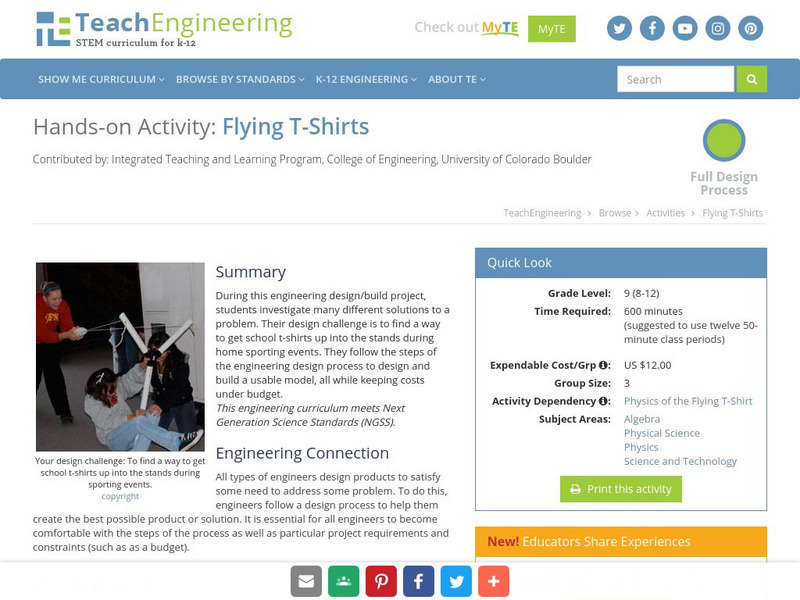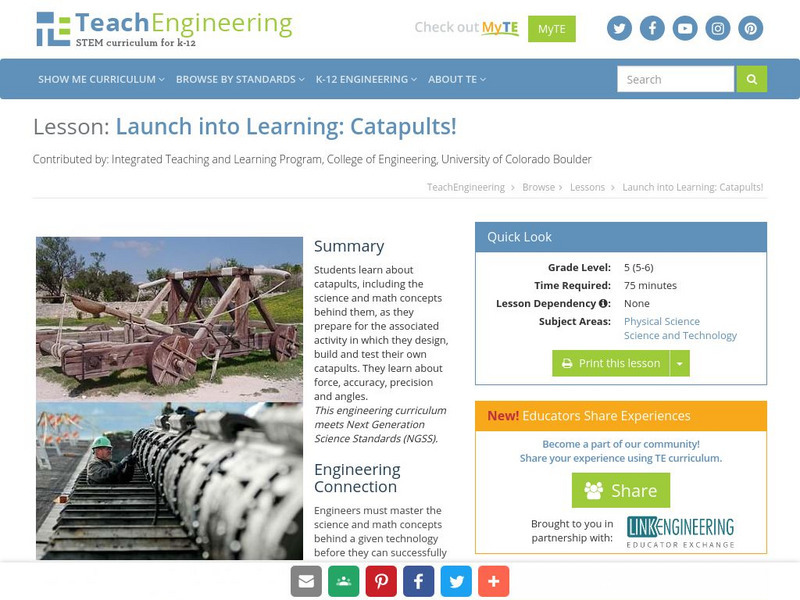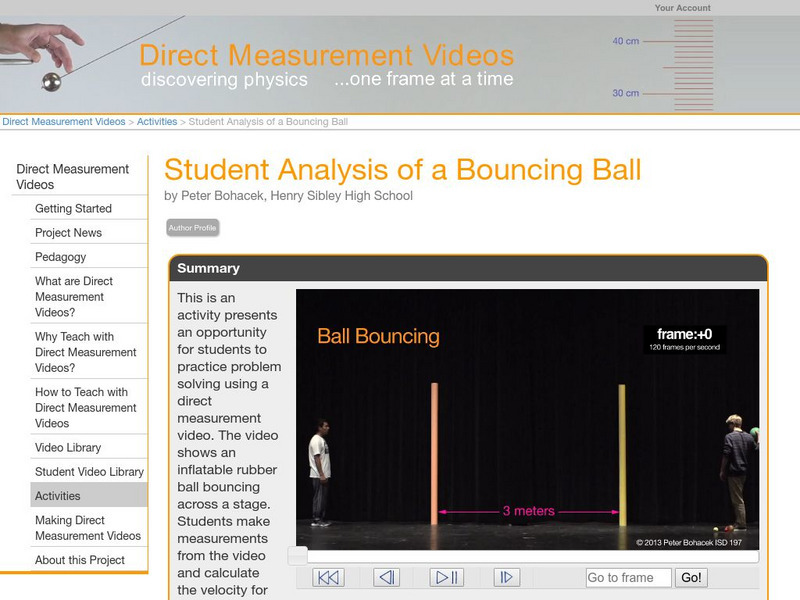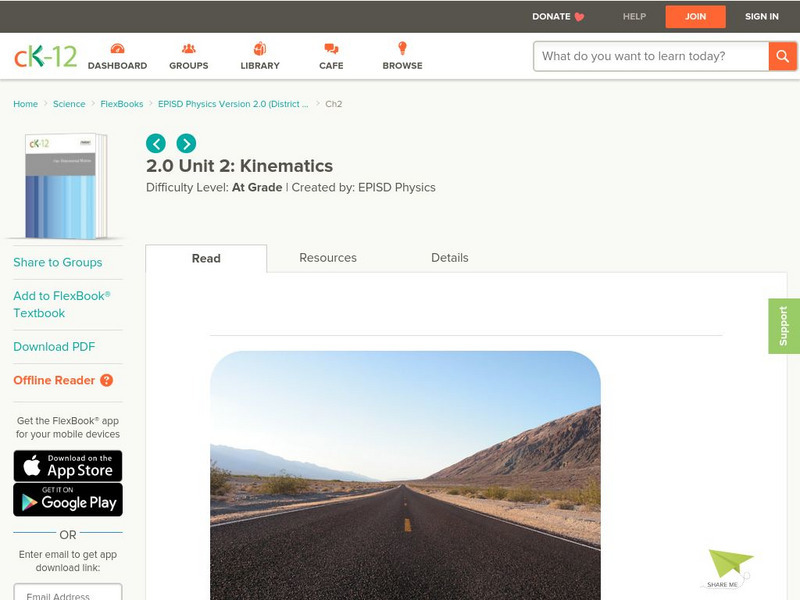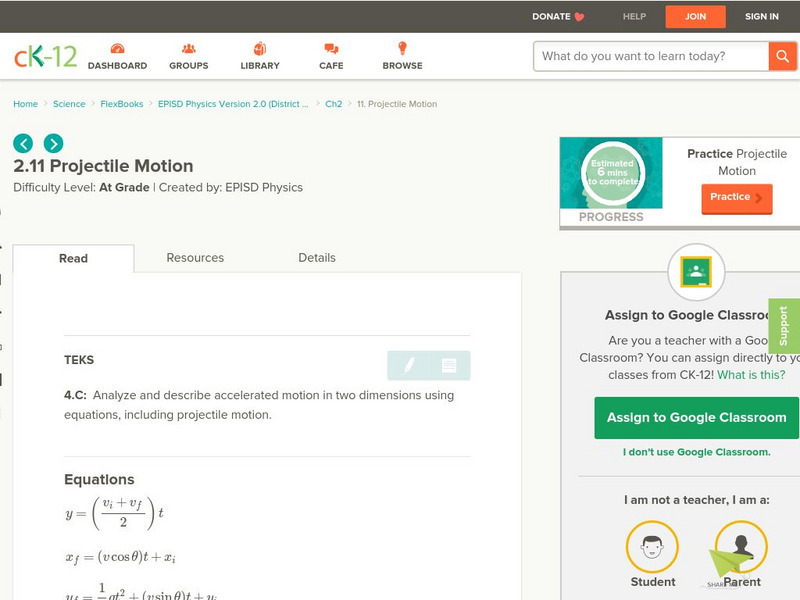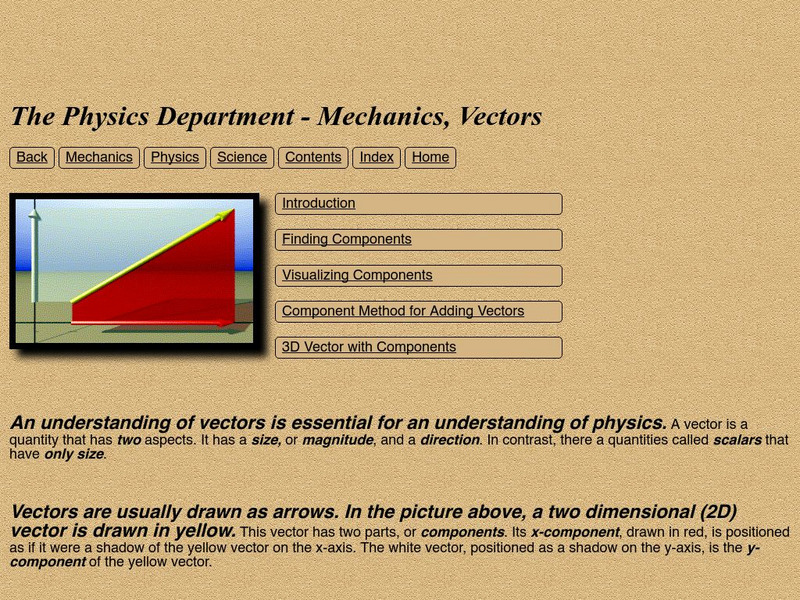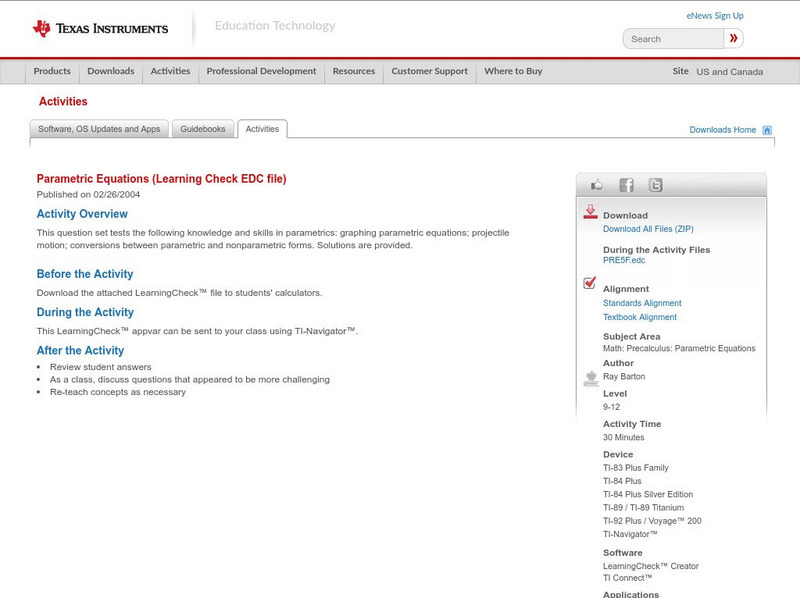TeachEngineering
Teach Engineering: A Shot Under Pressure
Students use their understanding of projectile physics and fluid dynamics to find the water pressure in water guns. By measuring the range of the water jets, they are able to calculate the theoretical pressure. Students create graphs to...
TeachEngineering
Teach Engineering: Right on Target: Catapult Game
Students experience the engineering design process as they design and build accurate and precise catapults using common materials. They use their catapults to participate in a game in which they launch Ping-Pong balls to attempt to hit...
TeachEngineering
Teach Engineering: Flying T Shirts
During this engineering design/build project, students investigate many different solutions to a problem. Their design challenge is to find a way to get school t-shirts up into the stands during home sporting events. They follow the...
TeachEngineering
Teach Engineering: Launch Into Learning: Catapults!
Students learn about catapults, including the science and math concepts behind them, as they prepare for the associated activity in which they design, build and test their own catapults. They learn about force, accuracy, precision and...
TeachEngineering
Teach Engineering: Physics of the Flying T Shirt
Students are introduced to the physics concepts of air resistance and launch angle as they apply to catapults. This includes the basic concepts of position, velocity and acceleration and their relationships to one another. They use...
TeachEngineering
Teach Engineering: Projectile Magic
Students watch video clips from October Sky and Harry Potter and the Sorcerer's Stone to learn about projectile motion. They explore the relationships between displacement, velocity and acceleration and calculate simple projectile...
Texas Education Agency
Texas Gateway: Projectile Motion
This resource provides alternative or additional tier-one learning options for students learning about projectile motion.
Physics Classroom
The Physics Classroom: Vectors Motion and Forces in Two Dimensions
Three complete tutorials on vectors and two dimension forces and motion. Lessons include informational text, interactive activities, animations, and quick, interactive comprehension checks along the way.
Physics Classroom
The Physics Classroom: Projectile Motion
Scroll down to Lesson 2 for a complete tutorial on projectile motion. Content covered in these tutorials includes an explanation of what a projectile is, what the characteristics of a projectile's trajectory are, horizontal and vertical...
Science Struck
Science Struck: A Comprehensive List of All the Physics Formulas
Provides a long list of physics formulas for easy reference.
TeachEngineering
Teach Engineering: Projectile Motion
Students are introduced to the concept of projectile motion, of which they are often familiar from life experiences,such as playing sports such as basketball or baseball, even though they may not understand the physics involved. Students...
Other
Desmos: Will It Hit the Hoop?
Students explore projectile motion in this activity as they look at videos and predict whether basketballs will land in the hoop. They then show their predictions in graphs of parabolic curves and compare their predictions to the actual...
Texas Education Agency
Texas Gateway: Kinematics in Two Dimensions: Section Summary
This is a summary of each of the sections in Chapter 3: Kinematics in Two Dimensions of the AP Physics online text.
Texas Education Agency
Texas Gateway: Kinematics in Two Dimensions: Projectile Motion
By the end of this section, you will be able to identify and explain the properties of a projectile, such as acceleration due to gravity, range, maximum height, and trajectory; determine the location and velocity of a projectile at...
Science Education Resource Center at Carleton College
Serc: Student Analysis of a Bouncing Ball
For this activity, students measure the velocity of a bouncing ball on its way up using a direct measurement video with an embedded frame counter. After solving the problem, they present their solution to classmates.
CK-12 Foundation
Ck 12: Physics: Projectile Motion
[Free Registration/Login may be required to access all resource tools.] A large collection of resources for learning about projectile motion. Includes learning modules, simulations, videos, a study guide, and practice activities.
CK-12 Foundation
Ck 12: Episd: Physics: Kinematics
[Free Registration/Login may be required to access all resource tools.] An online chapter focused on motion and the shapes it takes. Topics range from speed and velocity to acceleration and free fall. Find detailed visuals, learning...
CK-12 Foundation
Ck 12: Episd: Projectile Motion
[Free Registration/Login may be required to access all resource tools.] Applying mathematic equations, study how two dimensional acceleration and projectile motion are calculated.
CK-12 Foundation
Ck 12: Circular Motion
[Free Registration/Login may be required to access all resource tools.] In the following lesson students will be asked to analyze and describe accelerated motion in two dimensions using equations including circular examples.
CK-12 Foundation
Ck 12: Physics: Motion Study Guide
This study guide on motion covers some key vocabulary and terms to describe motion: displacement vs. distance, acceleration, speed vs. velocity, and instantaneous vs. average. It includes graphs showing distance vs. time, velocity vs....
Concord Consortium
Concord Consortium: Stem Resources: Launching a Satellite
Do you think you could fire an "unpowered" object into orbit? By controlling the angle and speed at which the satellite is launch, students will try to launch a satellite into space with this computer model. Activity includes questions...
Curated OER
Zona Land: Mechanics and Vectors
An exceptional tutorial on the topic of vectors that offers many helpful graphics, some of which are interactive.
Texas Instruments
Texas Instruments: Motion in Two Dimensions & Projectile Motion
This activity is designed to assess the comprehension of concepts related to motion in two dimensions and projectile motion.
Texas Instruments
Texas Instruments: Parametric Equations
This questions set tests the following knowledge and skills in parametrics: graphing parametric equations; projectile motion; conversions between parametric and nonparametric forms. Solutions are provided.




